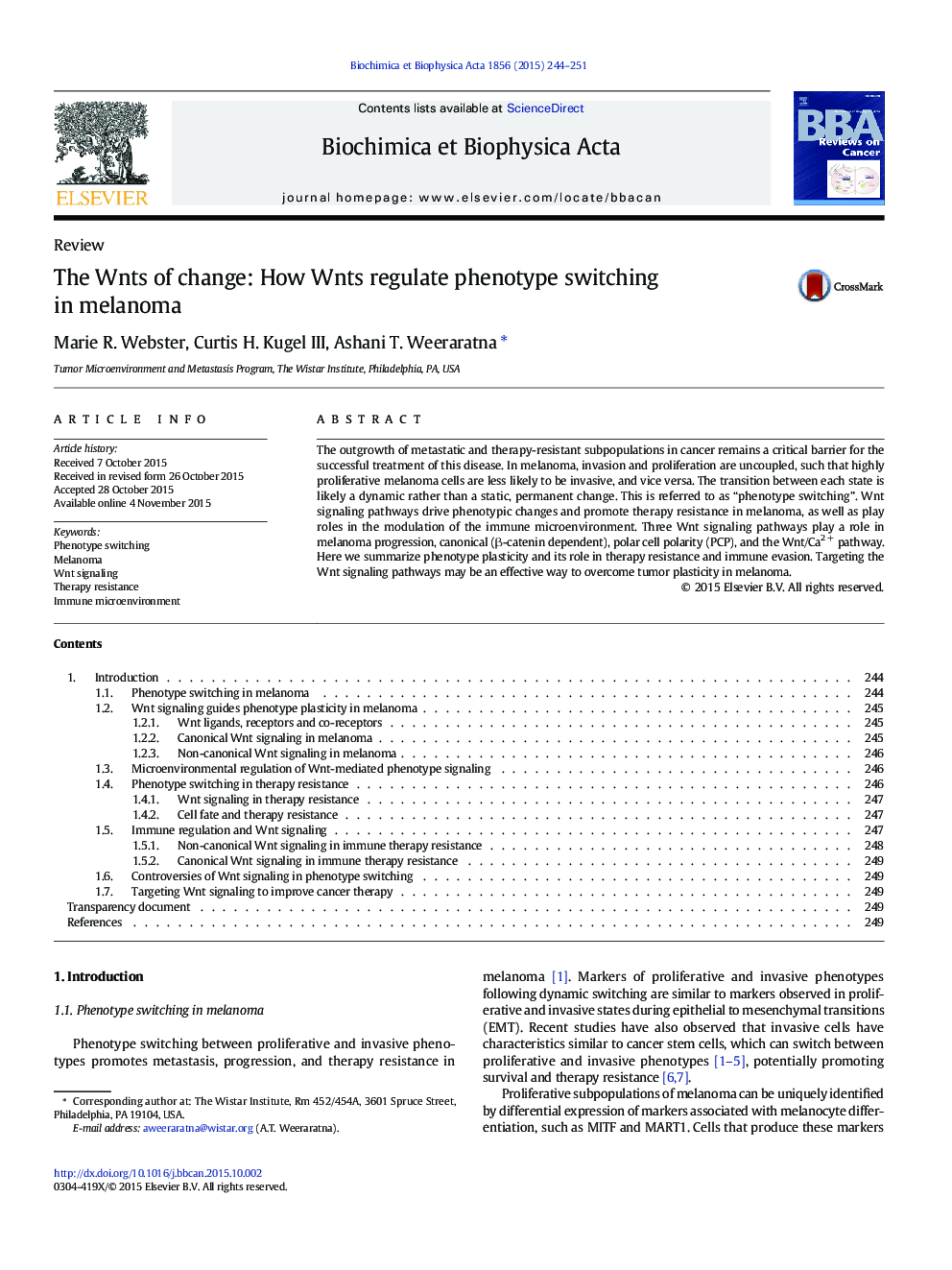| Article ID | Journal | Published Year | Pages | File Type |
|---|---|---|---|---|
| 2100829 | Biochimica et Biophysica Acta (BBA) - Reviews on Cancer | 2015 | 8 Pages |
The outgrowth of metastatic and therapy-resistant subpopulations in cancer remains a critical barrier for the successful treatment of this disease. In melanoma, invasion and proliferation are uncoupled, such that highly proliferative melanoma cells are less likely to be invasive, and vice versa. The transition between each state is likely a dynamic rather than a static, permanent change. This is referred to as “phenotype switching”. Wnt signaling pathways drive phenotypic changes and promote therapy resistance in melanoma, as well as play roles in the modulation of the immune microenvironment. Three Wnt signaling pathways play a role in melanoma progression, canonical (β-catenin dependent), polar cell polarity (PCP), and the Wnt/Ca2 + pathway. Here we summarize phenotype plasticity and its role in therapy resistance and immune evasion. Targeting the Wnt signaling pathways may be an effective way to overcome tumor plasticity in melanoma.
